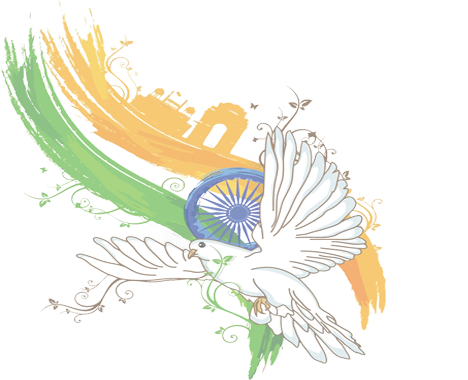National Significance
Learn about our National Symbols
National Significance: National symbols of India
National images of a nation speak to a large group of articles that paint a one of a kind character about the nation's sensibilities. Delegates are picked precisely and each portrays a specific excellence that is an unmistakable normal for the nation. The rich legacy of India is an aftereffect of osmosis of social impacts from its trespassers through the ages. Our own is a multi-faceted culture and the different features of our legacy require proper portrayal. Various national images have been assigned after conscious thought. The different classifications in which Indian national images have been ascribed are National Flag, National Anthem, National Emblem, National Song, National Bird, National Animal, National Tree, National Flower, National Fruit, National Calendar, National Game and more.
National Bird of India
The peacock, commonly known as Indian peafowl was proclaimed the national bird of India in 1963, in light of the fact that it was totally a piece of Indian custom and culture. A peacock is a symbol of grace and beauty.
Another motivation behind why the peacock was picked as the national bird was a direct result of its essence the nation over, to such an extent that even ordinary citizens know about the bird. In addition, no other nation had the peacock as its national bird either. The peacock satisfied all these and subsequently turned into the national bird of India.
National Animal of India
Tiger (Panthera Tigris, Linnaeus) is the national animal of India. The tiger is also called the Lord of the Jungle and showcases India's natural life riches. As the national animal of India, tiger symbolizes India's untamed life riches.
The uncommon mix of beauty, quality, dexterity and gigantic power has earned the tiger incredible regard and high regard. The Bengal Tiger was announced as the national animal of India in April 1973, with the start of Project Tiger, to ensure the tigers in India. Before this, the lion was the national animal of India.

National Anthem
The national anthem of India, Jana-Gana-Mana, was written by Rabindranath Tagore and was embraced by the Constituent Assembly of India on January 24th, 1950. Learn More

National Flower
Lotus is the National flower of India. The most imperative thing about lotus is that even in the wake of developing in dim water it is untouched by its impurity. Learn More

The National Fruit
Mangoes are native to India and thus truly Indian. The great Mughal emperor Akbar had planted about 1,00,000 mango trees in Lakhi Bagh in Darbhanga. Learn More

The National Song
'Vande Matram' Our national song was composed in Sanskrit by Bankimchandra Chatterjee. It has inspired many freedom fighters. Learn More

National Flag
The national flag of India is horizontal rectangular in shape and has three colours – deep saffron, white and green with Ashoka chakra (Wheel of Law) at its centre. Learn More

The National Game
In spite of cricket’s huge popularity in India, hockey is still the national game of India. Hockey when declared as the national game was very popular. Learn More
The National Tree of India
The Banyan tree represents eternal life, because of its ever-expanding branches.
The National Emblem of India
The Lion Capital of Ashoka at Sarnath is the national emblem of India.
National River of India
The Ganges or Ganga, this is the most sacred river on the earth.
National Currency of India
Indian Rupee is the official currency of the Republic of India.











